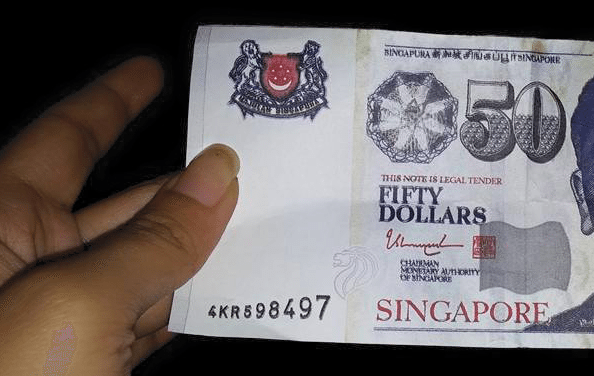 I refer to the report, “HDB to spend $1 billion on upgrading; 85,000 households to benefit” (Today, Apr 19).
I refer to the report, “HDB to spend $1 billion on upgrading; 85,000 households to benefit” (Today, Apr 19).
It reported:
“Deputy Prime Minister and Home Affairs Minister Wong Kan Seng said this comes up to nearly $12,000 of upgrading benefits per household. The funds come on top of HDB’s contribution of $3.4 billion for the eight towns since 1990. When asked, the HDB did not elaborate on the time frame during which the fresh $1 billion would be spent”.
Given that ” the HDB did not elaborate on the time frame during which the fresh $1 billion would be spent”, if it took 20 years since 1990 to use $3.4 billion, will the $1 billion be spent in 6, 10 or 20 years?
It may be akin to saying I will give you money, but how much a year, exactly what type of upgrading, which area, I can’t tell you!
Surely, the HDB should have worked out the details to derive the $1 billion, instead of shrouding it in secrecy.
How long do we have to wait for the details and time frame to be made public?
As the HDB’s last annual report said it had a deficit of $2 billion, will its next report say a deficit of $3 billion?
Will upgrading lead to even higher Service and Conservancy Charges (S & CC)?
Although upgrading was announced last year for the two opposition wards, I understand that it has not started yet. So, will the 85,000 that will benefit from this new $1 billion, be started only after the two opposition wards go first?
If we ask Singaporeans as to how they may prefer the $1 billion to be spent, I think many may prefer to have HDB Concessionary loans for all HDB flats, lower new HDB flat prices, higher valuation than the 90 per cent that the HDB uses when it compulsorily acquires flats of those who can’t pay their HDB loans, etc.
Although Singaporeans pay less for upgrading, compared to permanent residents (PRs), in line with the policy to widen the differentiation between citizens and PRs, why not charge citizens less than PRs for this upgrading too, instead of using the same formula currently?
Whilst we are on the subject of differentiation, why is it that almost every time that a policy is changed to widen the differentiation between Singaporeans and PRs, the outcome may be that no Singaporeans are better off and some Singaporeans are worst off?
For example, the change in HDB rules that Singaporeans with PR spouses will get $10,000 less in the housing grant means that some Singaporeans are worse off.
With 39 per cent of Singaporeans marrying non-citizens, this may increasingly affect quite a lot of Singaporeans.
Singaporeans and PRs buying resale flats with bank loans or HDB loans will have their Minimum Occupation Period (MOP) extended from the current one and 2.5 years respectively, to three years.
This also means that no Singaporean is better off than a PR. In fact, Singaporeans with resale flat HDB loans are worse off as the current 2.5 years will become three years.
In order for there to be a real differentiation in this respect, perhaps the MOP for PRs should be six months longer than citizens, or that for citizens should be at 2.5 years.
The new eight per cent ethnic quota on non-Malaysian PRs in HDB blocks, may actually affect Singaporeans more, because when the quota is reached, Singaporeans cannot sell to PRs who may be able to pay at higher prices.
On the other hand, PRs can sell to PRs as well as Singaporeans, and thus may be able to get relatively higher prices.
Perhaps PRs should not be allowed to sell to PRs once the quota is reached, so that there will always be a “one flat” buffer, so that Singaporeans may not be relatively worse off.
Another example is the reduction in medical fee subsidy by another five per cent next year, and another five per cent the following year.
This means that PRs staying in a Class C hospital ward will be paying 16.7 and 33 per cent more eventually.
Singaporeans with PR spouses, dependents or employees, may have to bear the brunt of the increase of up to 100 per cent more compared to the former 80 per cent subsidy which applied to both citizens and PRs.
So, no Singaporean is better off, and some Singaporeans may be worse off.
Perhaps a half per cent gesturic increase in subsidy for Singaporeans, could at least make the policy change not another “no Singaporean is better off” policy.
Another example is the increase in universities, polytechnic and Institute of Technical Education (ITE) fees, whereby everyone has to pay more.
Why not just increase fees for PRs and foreigners, such that Singaporeans still pay the same fees?
Whilst having nothing to do with differentiation, the new HDB rule that market interest rates will be changed on HDB loans until the existing flat is sold, means that Singaporeans who currently enjoy HDB concessionary loan rates for up to the six months that is given to sell their existing flats when they change to another one, will pay more in future.
So, why charge everyone more, when the second HDB concessionary loan policy is now relaxed to include down-graders as well, instead of just up-graders under the existing rules?
In all the examples given above, policy changes have resulted in increased revenues by way of housing subsidy reduction, increase in medical fees, increase in school fees, and higher HDB housing loan market rates.
Surely, the outcome of differentiation policy changes should be that at least some Singaporeans are better off.
But it doesn’t look like they are.
Leong Sze Hian
——–
Pictures from Today.
———




